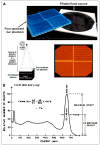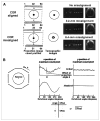Routine quality control of clinical nuclear medicine instrumentation: a brief review
- PMID: 18587088
- PMCID: PMC2703015
- DOI: 10.2967/jnumed.107.050203
Routine quality control of clinical nuclear medicine instrumentation: a brief review
Abstract
This article reviews routine quality-control (QC) procedures for current nuclear medicine instrumentation, including the survey meter, dose calibrator, well counter, intraoperative probe, organ ("thyroid") uptake probe, gamma-camera, SPECT and SPECT/CT scanner, and PET and PET/CT scanner. It should be particularly useful for residents, fellows, and other trainees in nuclear medicine, nuclear cardiology, and radiology. The procedures described and their respective frequencies are presented only as general guidelines.
Conflict of interest statement
No potential conflict of interest relevant to this article was reported.
Figures














Similar articles
-
Advances in imaging instrumentation for nuclear cardiology.J Nucl Cardiol. 2019 Apr;26(2):543-556. doi: 10.1007/s12350-017-0979-8. Epub 2017 Jul 17. J Nucl Cardiol. 2019. PMID: 28718074 Review.
-
New instrumentation for cardiovascular nuclear medicine.J Nucl Med. 1994 Apr;35(4):20N-22N. J Nucl Med. 1994. PMID: 8151370 No abstract available.
-
Proceedings of the cardiac PET summit meeting 12 may 2014: Cardiac PET and SPECT instrumentation.J Nucl Cardiol. 2015 Jun;22(3):563-70. doi: 10.1007/s12350-015-0114-7. Epub 2015 Apr 1. J Nucl Cardiol. 2015. PMID: 25824018 Review.
-
Development of NEMA-based software for gamma camera quality control.J Digit Imaging. 2008 Jun;21(2):243-55. doi: 10.1007/s10278-007-9030-y. Epub 2007 Mar 28. J Digit Imaging. 2008. PMID: 17393254 Free PMC article.
-
National Electrical Manufacturers Association recommendations for implementing SPECT instrumentation quality control.J Nucl Med Technol. 1999 Mar;27(1):67-72. J Nucl Med Technol. 1999. PMID: 10322582 No abstract available.
Cited by
-
"Picture-in-Picture" Artifact: Introduction and Characterization of a Hitherto Unrecognized Imaging Artifact in Creating Perfusion Defects in Myocardial Perfusion Single-Photon Emission Computed Tomography.Indian J Nucl Med. 2021 Jan-Mar;36(1):69-72. doi: 10.4103/ijnm.IJNM_55_20. Epub 2021 Mar 4. Indian J Nucl Med. 2021. PMID: 34040303 Free PMC article.
-
Proof-of-Concept Study of the NOTI Chelating Platform: Preclinical Evaluation of 64Cu-Labeled Mono- and Trimeric c(RGDfK) Conjugates.Mol Imaging Biol. 2021 Feb;23(1):95-108. doi: 10.1007/s11307-020-01530-8. Epub 2020 Aug 27. Mol Imaging Biol. 2021. PMID: 32856224 Free PMC article.
-
Human Biodistribution and Radiation Dosimetry of 18F-Clofarabine, a PET Probe Targeting the Deoxyribonucleoside Salvage Pathway.J Nucl Med. 2017 Mar;58(3):374-378. doi: 10.2967/jnumed.116.182394. Epub 2016 Nov 3. J Nucl Med. 2017. PMID: 27811125 Free PMC article.
-
Modular strategy for the construction of radiometalated antibodies for positron emission tomography based on inverse electron demand Diels-Alder click chemistry.Bioconjug Chem. 2011 Oct 19;22(10):2048-59. doi: 10.1021/bc200288d. Epub 2011 Sep 20. Bioconjug Chem. 2011. PMID: 21877749 Free PMC article.
-
Light-Induced Radiosynthesis of 89Zr-DFO-Azepin-Onartuzumab for Imaging the Hepatocyte Growth Factor Receptor.J Nucl Med. 2020 Jul;61(7):1072-1078. doi: 10.2967/jnumed.119.237180. Epub 2020 Jan 10. J Nucl Med. 2020. PMID: 31924725 Free PMC article.
References
-
- Lin PJP, Beck TJ, Borras C, et al. Specification and Acceptance Testing of Computed Tomography Scanners. New York, NY: American Association of Physicists in Medicine; 1993.
-
- Shepard SJ, Lin PJP, Boone JM, et al. Quality Control in Diagnostic Radiology. College Park, MD: American Association of Physicists in Medicine; 2002.
-
- National Electrical Manufacturers Association (NEMA) Performance Measurements of Scintillation Cameras. Rosslyn, VA: NEMA; 2001.
-
- National Electrical Manufacturers Association (NEMA) Performance Measurements of Positron Emission Tomographs. Rosslyn, VA: NEMA; 2001.
-
- Horton PW, Leach KG, Griffiths JT, et al. The Theory, Specification, and Testing of Anger Type Gamma Cameras. London, U.K.: Hospital Physicists’ Association; 1978.
Publication types
MeSH terms
Grants and funding
LinkOut - more resources
Full Text Sources
Other Literature Sources
